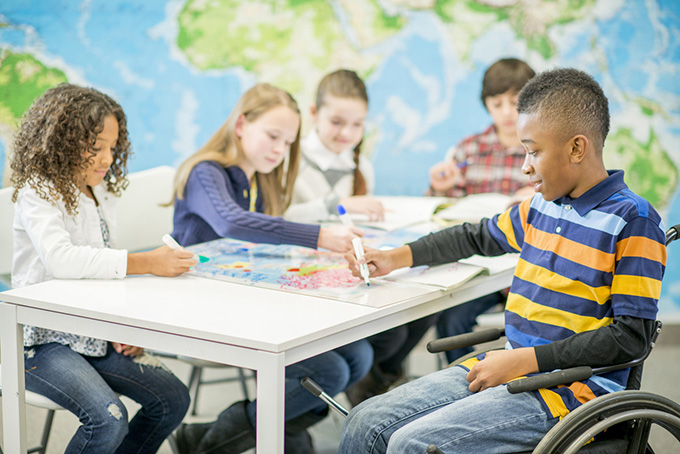 This week, the disability royal commission is looking at the experiences of children and young people with disability in different schools across Australia. This includes mainstream schools as well as so-called “special schools”.
An estimated 10% of school students (aged 5–18) in Australia have a disability, although this number is much higher in some states. Most of these students (89%) attend mainstream schools, but an increasing number of students with disability and their families are choosing special schools.
Research suggests children fare better in inclusive mainstream settings. So why are more students being enrolled in special schools, and what can we do about it?
This week, the disability royal commission is looking at the experiences of children and young people with disability in different schools across Australia. This includes mainstream schools as well as so-called “special schools”.
An estimated 10% of school students (aged 5–18) in Australia have a disability, although this number is much higher in some states. Most of these students (89%) attend mainstream schools, but an increasing number of students with disability and their families are choosing special schools.
Research suggests children fare better in inclusive mainstream settings. So why are more students being enrolled in special schools, and what can we do about it?
Every child has a right to education
Internationally, it is recognised that every child has the right to education. The Convention of the Rights of People with Disability, to which Australia was one of the first signatories, says children with disabilities should not be excluded from free and compulsory education on the basis of disability. As a result, education systems need to think about what inclusion means, and how to achieve it."We are the same in many ways. For example, we all love someone, we all have dreams, we all need to be treated fairly. We all have things we like to do, places to go. I go to school and do my homework like everyone else.’ – Bas, aged 12 #DisabilityRC pic.twitter.com/1Ws0G0bdJ3
— Disability Royal Commission (@DRC_AU) June 8, 2022
Why do we still have special schools?
Special schools aim to meet the needs of students with disability by providing support and adjustments away from mainstream classrooms. Disability and education advocates argue special schools are a form of segregation and go against students’ human rights. However, some state governments continue to promote special schools alongside the mainstream system, arguing this still qualifies as “inclusion” in learning. Some parents also feel they have no option but to enrol their children in a special school. The disability royal commission this week heard stories such as that of “Isabella”, a South Australian mother whose son “Emerson” has autism. Emerson went through four mainstream schools in his first 18 months of schooling?. Some mainstream schools discourage children with disability enrolling by rejecting enrolment based on their disability label, making them feel unwelcome, or making it clear they can’t offer adequate support. Students with disability also face higher levels of bullying than their peers and are expelled from schools at higher rates. Research shows parents will choose a special school for safety and smaller class sizes, and teachers who have adequate, specialised training. We also know teacher training is a significant issue. Research indicates only 38% of Australian teachers feel equipped to teach students with disability.The benefits of inclusion
But the evidence suggests students with disability do better in the mainstream system – this includes developing stronger academic skills. For example, the language skills of preschoolers with disabilities improve when they can interact with their peers without disability in the same classroom. While special schools are often seen to be more cost-effective – they consolidate specialist trained teachers in one place – there is evidence the opportunities for academic advancement and opportunity are not adequate."It was seen to be a better solution to hide and to isolate disabled students, many of us who were already experiencing a lot of isolation, to prevent bullying than what it was to educate our peers and reprimand bullying and harassing behaviours." – Gi Brown #DisabilityRC pic.twitter.com/4h6pz0UI78
— Disability Royal Commission (@DRC_AU) June 7, 2022
What needs to change?
The Australian Coalition for Inclusive Education is a national coalition of disability advocates and organisations. It has developed a ten year plan for inclusive education in Australia. This includes:- no new enrolments of students entering the first year of primary school in special school
- students already in special schools move to their local mainstream school of choice, with students with disability having a say in what they want
- young people with disability should help to design teaching approaches in mainstream schools, and be paid for their advice.
What can the royal commission do?
This week is the disability royal commission’s third hearing into education. It is due to hand down its final report in September 2023."I wasn't allowed to be a kid because I was constantly monitored. Rather than help me be included, the teachers' aids became a segregation in themselves because no one wanted to be around a teacher 24/7." – Brittney Wilson, aspiring advocate #DisabilityRC pic.twitter.com/AQccvGj0Wn
— Disability Royal Commission (@DRC_AU) June 6, 2022